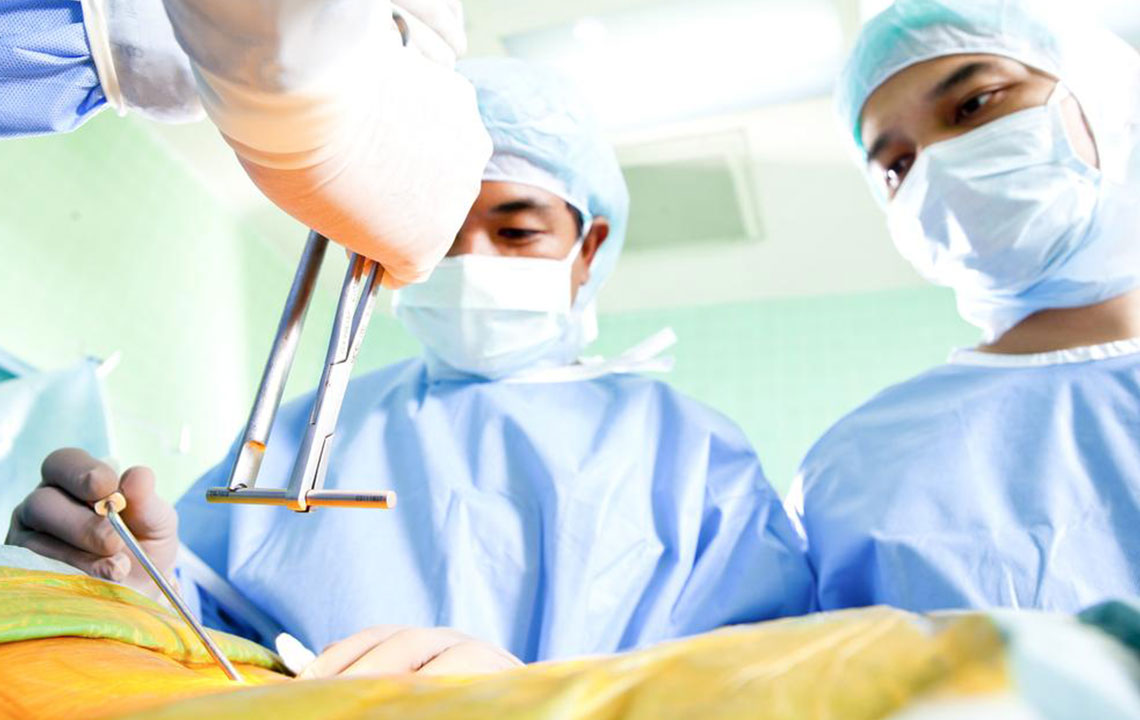Know about the Spinal Fusion Surgery
A spinal fusion surgery is used to join or fuse the vertebrae in the lower back. It is used to join the vertebrae permanently to disable motion between them. This major surgery is conducted for hours. The techniques used in spinal fusion surgery are same as the normal healing of broken bones. A bone-like material is placed between the two vertebrae. Rods, screws, and metal plates can also be placed to fuse the spinal vertebrae together.
The spinal fusion surgery basically aims to immobilize the spinal vertebrae. It limits the spinal cord’s movement. Due to this, some extra pressure or stress is exerted on the vertebrae.

The spinal fusion surgery is performed under the following conditions:
The surgeons conduct the surgery to rectify pains and deformities of the spinal vertebrae. Various spine problems mentioned below can be corrected with the surgery.
Spine deformities: Abnormal rounding of the upper spine, which is also known as kyphosis, and sideways curvature of the spine called scoliosis can be rectified with the spinal fusion surgery.
Broken vertebrae: When the broken vertebrae cause pain and bring instability to the spinal column, they can be healed with a spinal fusion surgery.
Herniated discs: When the damaged herniated disc is removed, spinal fusions work well to reduce the pain and stabilize the spinal column.
Spondylolisthesis: Spondylolisthesis occurs when a vertebra slips on the next vertebra under it. Such conditions cause numbness or nerve crowding in the leg along with intense pain. This problem can be treated using spondylolisthesis.
Spinal weakness: Too much motion between the vertebrae makes the spine unstable. This problem is quite frequent among people suffering from arthritis. The spinal fusion surgery is the effective treatment to fix the spinal instability.
How is the spinal fusion surgery conducted?
Before the surgery, the patient must tell his doctor about the medications he/she is taking. It is advised not to take medications before the surgery. The hair on the surgical site is trimmed. The part is then treated with an antiseptic solution. Local anesthesia is then injected into the patient to make him/her unconscious. Different techniques are used to conduct the surgery. The method deployed by the surgeons depends on the cause of the spinal fusion and the position of the vertebrae to be treated.
Steps of the surgical procedure:
Incision: The surgeon starts by making an incision in a specific location. These locations could the neck, abdomen, throat, or back of the spine to get access to the spinal column from the front.
Preparation of the bone graft: A bone graft is used to fuse the two vertebrae. It could be taken from the pelvis region or from the bone bank. If the surgeon decides to use the bone graft from the patient’s body, he then makes an incision in the pelvic bone and extracts a small part and then stitches the incision.
Fusion: The bone graft is placed between the vertebrae of the spinal cord. At times, the surgeon may also use rods and screws to fuse the vertebrae together. The bone graft heals naturally.
In some severe cases, the surgeons use synthetic substances which fasten the bone growth and fusion of the broken vertebrae.
After the surgery has been successfully conducted, the patient must stay in the hospital for 2–3 days. The patient is likely to feel pain and discomfort which is controlled with strong medications.
The patient may likely suffer from fever, tenderness, and inflammation few days after the surgery. The fusion of bones may take a couple of months to heal properly. It is advised to wear the back brace regularly to avoid the misalignment of the spinal cord. Get the physical therapy lessons to learn about the correct sitting, standing, and walking postures.
Risks associated with the spinal fusion surgery
The surgeons carry out the surgery with ultimate safety and sophistication. However, the patient undergoing the surgery can suffer from different complications. Some of them are blood clots, infection, bleeding, slow healing of wounds, and pain in the region from where the bone graft is extracted. The blood vessels around the spine can even be injured.
The spinal fusion surgery interferes with the normal functioning of the spinal cord. The stress and strain of the fused vertebrae are exerted on the adjacent vertebrae. This could fasten the wear and tear of joints of the vertebral column. The patient may likely suffer from chronic pain later.
The patient is advised to take good care to recover from the surgery. Take a break from the physical activities that require rigorous force. A balanced diet with high proteins can ensure a quick recovery.

